Shooting with the Mann: What’s the Best Stance?
Richard Mann 01.16.17
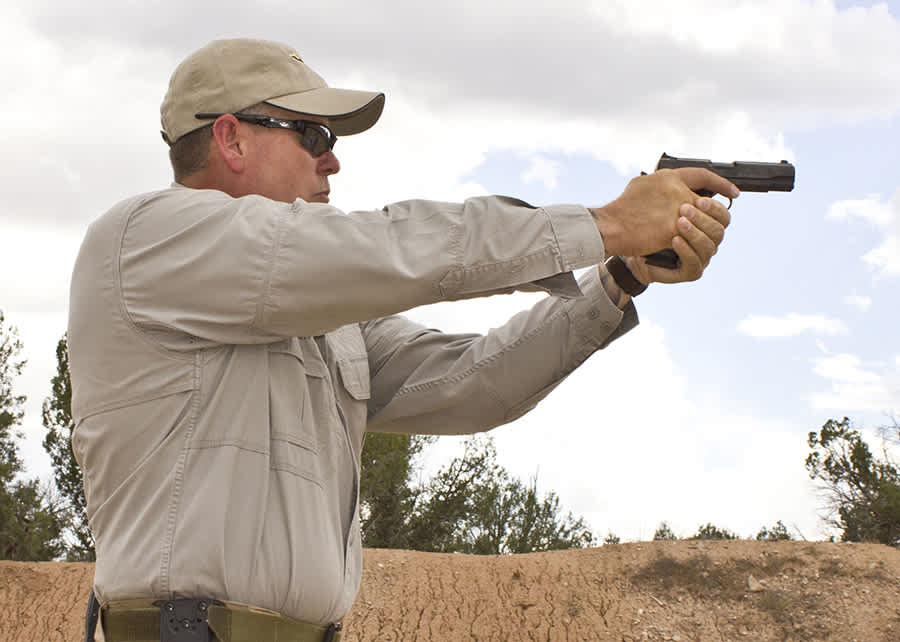
Whatever you do, your body has to be in a position when you do it. Using your cell phone or picking your nose requires you to assume a position. You don’t hear a lot of discussion about the correct position for doing either of these things, but when it comes to shooting a handgun there’s no shortage of opinions.
I’ve got ‘em too, and I’m not so sure they’re all that popular with my contemporaries, or even my gun fighting school alma mater – Gunsite Academy. During one of my pistol classes at Gunsite, an instructor asked me, “Where the hell did you learn that stance?”
I believe the only way to measure the validity of your defensive handgun shooting stance is through the balance of Diligentia, Vis, Celeritas, or “DVC” as Colonel Cooper referred to it. These three words are Latin for accuracy, power, and speed, and their balance is the holy grail of defensive pistol craft. The position you assume that allows you to achieve this balance – in each individual situation – is the position you should use.
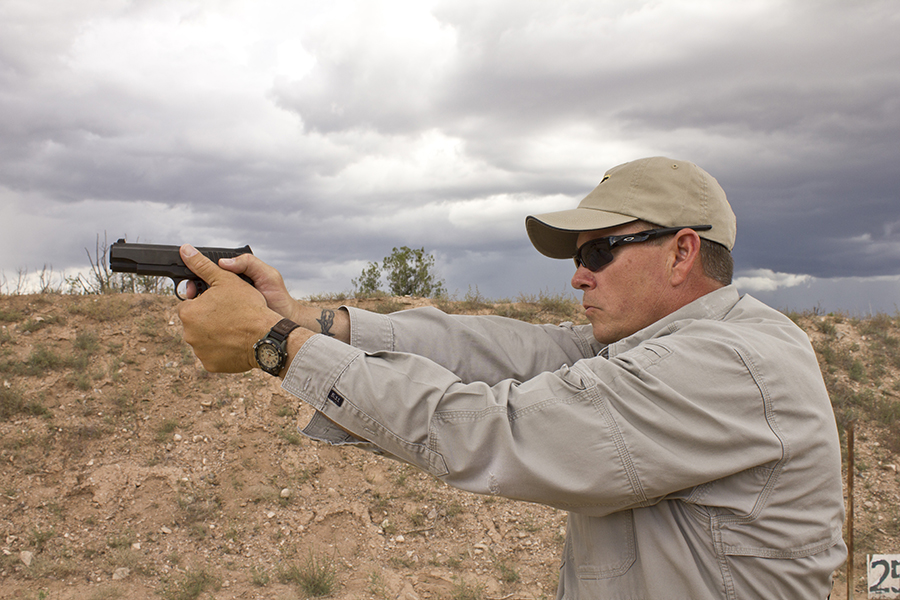
The stance argument mostly revolves around two concepts: isosceles and Weaver. The problem is nailing down a definitive description of either because all humans are different. For example, if I try to impose my nose picking position on you, you’ll likely find it unsuitable and will modify it accordingly. Shooting positions are no different. After all the input and training I’ve received, I shoot what might be called a modified Weaver or a hybrid isosceles.
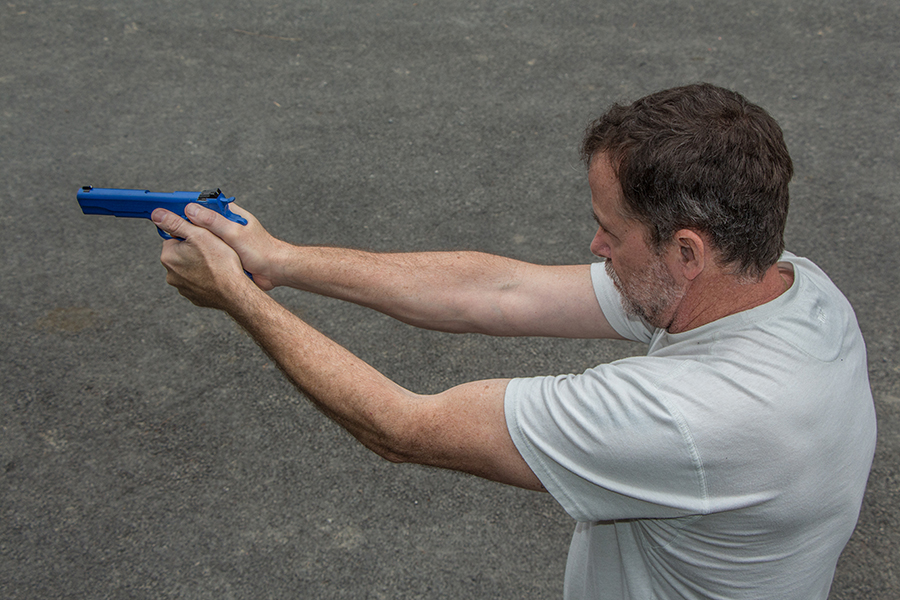
There was a time when I did a lot of competition shooting, and the isosceles worked well for me. When you know the location you’ll shoot from, when you know where all the targets are, when you know how many times you’ll have to shoot each target, and when and where you’ll have to move to, I believe some form of the isosceles stance is best for most shooters.

Conversely, if you don’t know if you’ll have to shoot, which direction you’ll have to shoot, who or what you’ll have to shoot at, how close the target/threat will be, and where you might have to move to, or more importantly, how you may have to fight, I’m convinced some version of the Weaver is superior.
Maybe a simpler way to say it would be that in personal protection situations – not in simulated combat competition – go Weaver. It allows for a smoother transition to and from the retention and fighting positions and, quite critically, a variation of the Weaver must be employed when using the best flashlight techniques. It also works very well for shotguns and carbines.
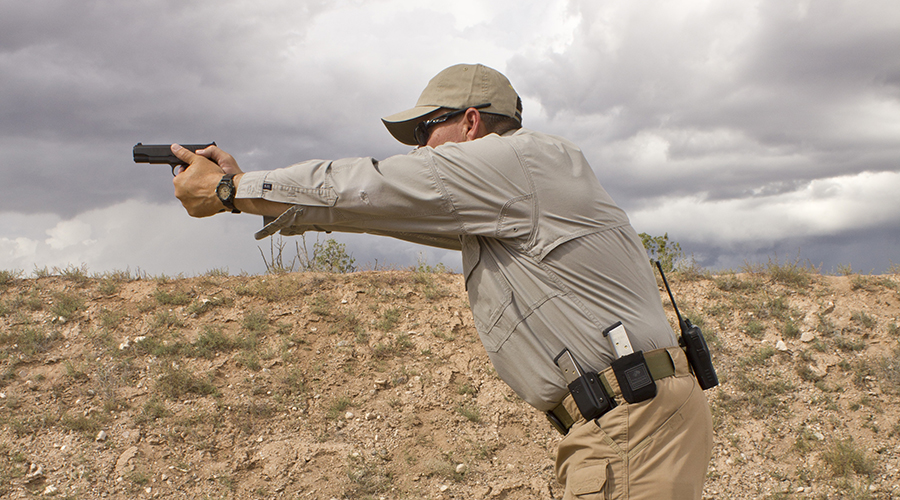
Training, experience and necessity morphed my shooting position into something halfway between the Weaver and isosceles. My shooting elbow isn’t locked, and my support elbow is bent at about 23 degrees. I’m not trying to sell you on my position; I’m trying to convince you that you need to adapt one, the other, or both of these stances to suit you. Who cares what it’s called if it works?
I believe that, at the core of the conundrum, for most shooters the Weaver stance is the best reactive/protective stance. When you don’t know what’s coming, but you expect it to be bad, a Weaverish-like stance is best.
On the other hand, if you’re attacking a pre-determined course of fire, the isosceles-styled stance probably has an advantage. Just don’t be afraid to work around these stances to come up with a mutation that works for you.
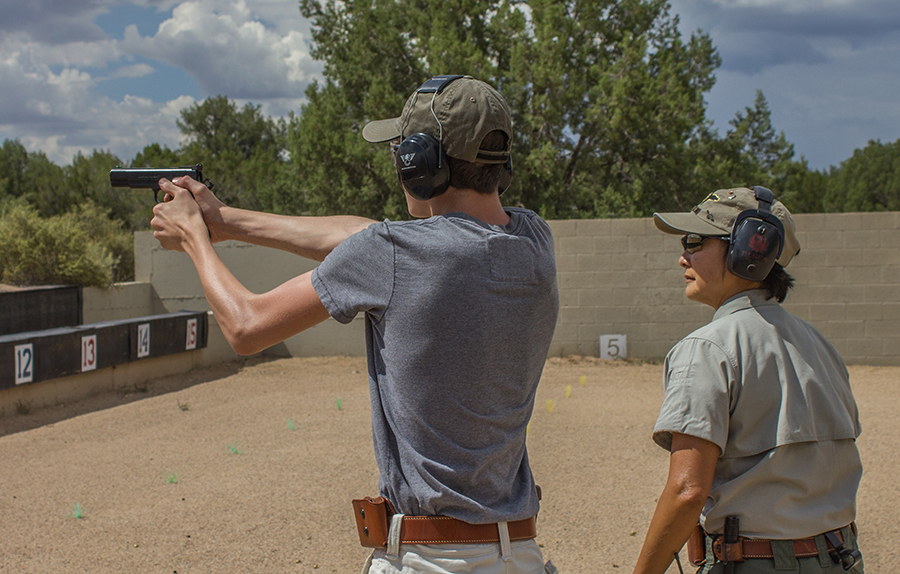
That way, when a Gunsite instructor asks you, “Where’d you learned to shoot like that?” you can say, “I taught myself.” Of course, if your shooting sucks, you might want to blame someone else.
Images by Richard Mann

